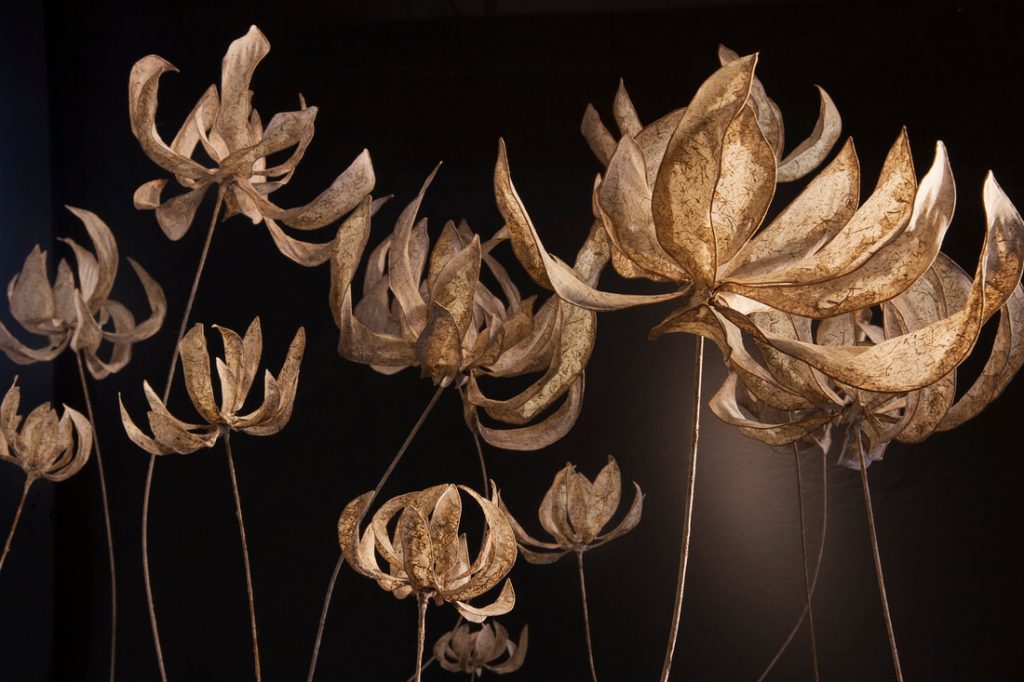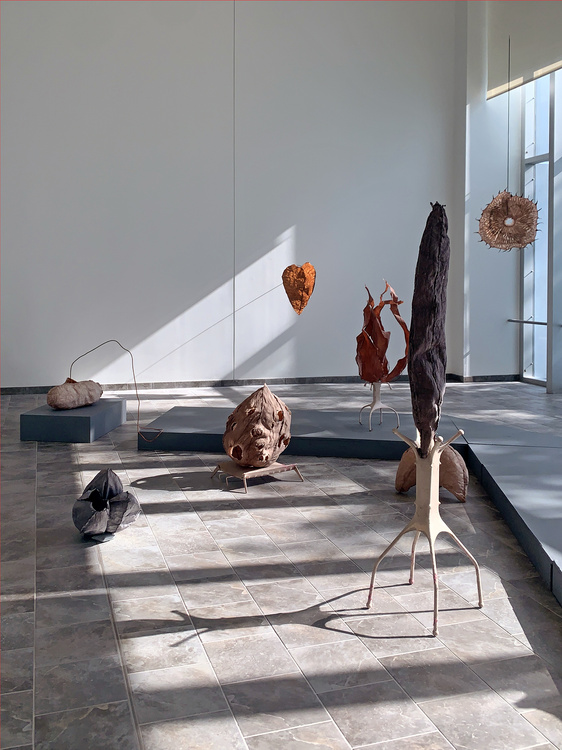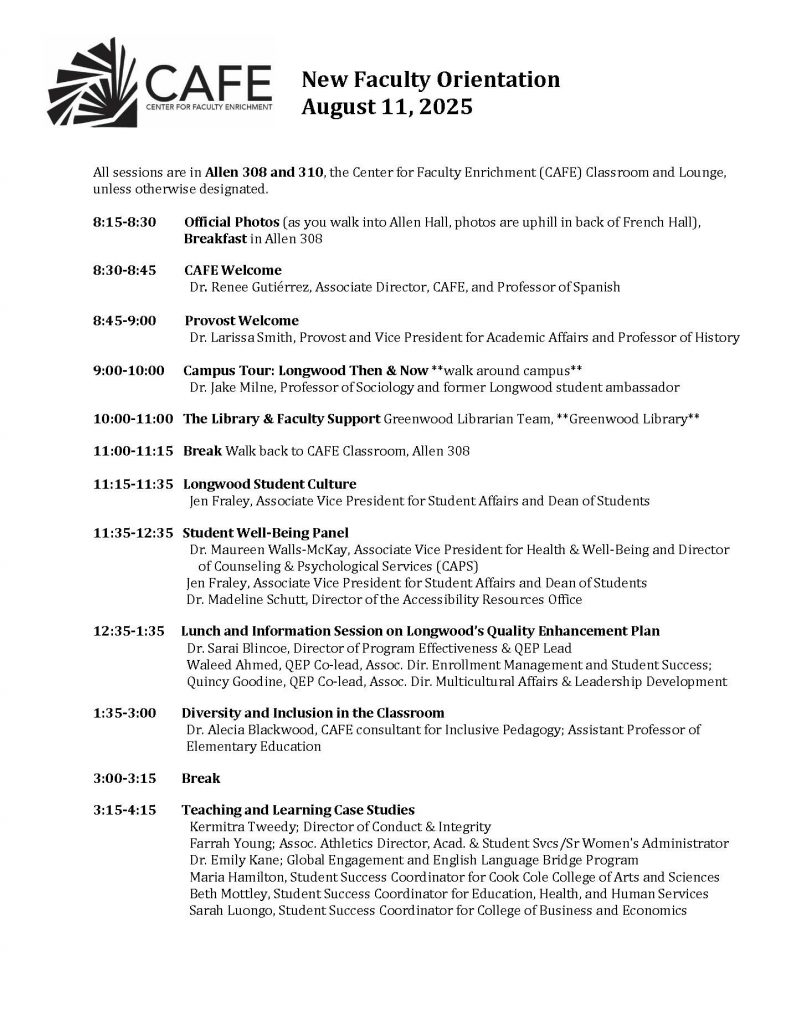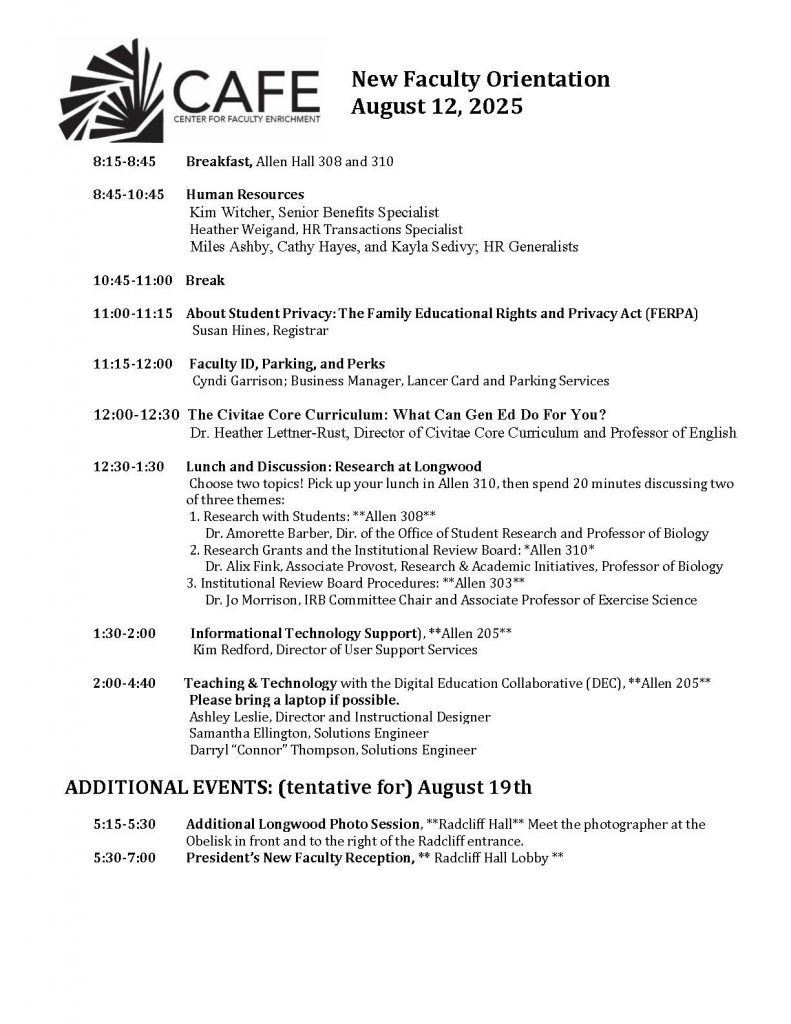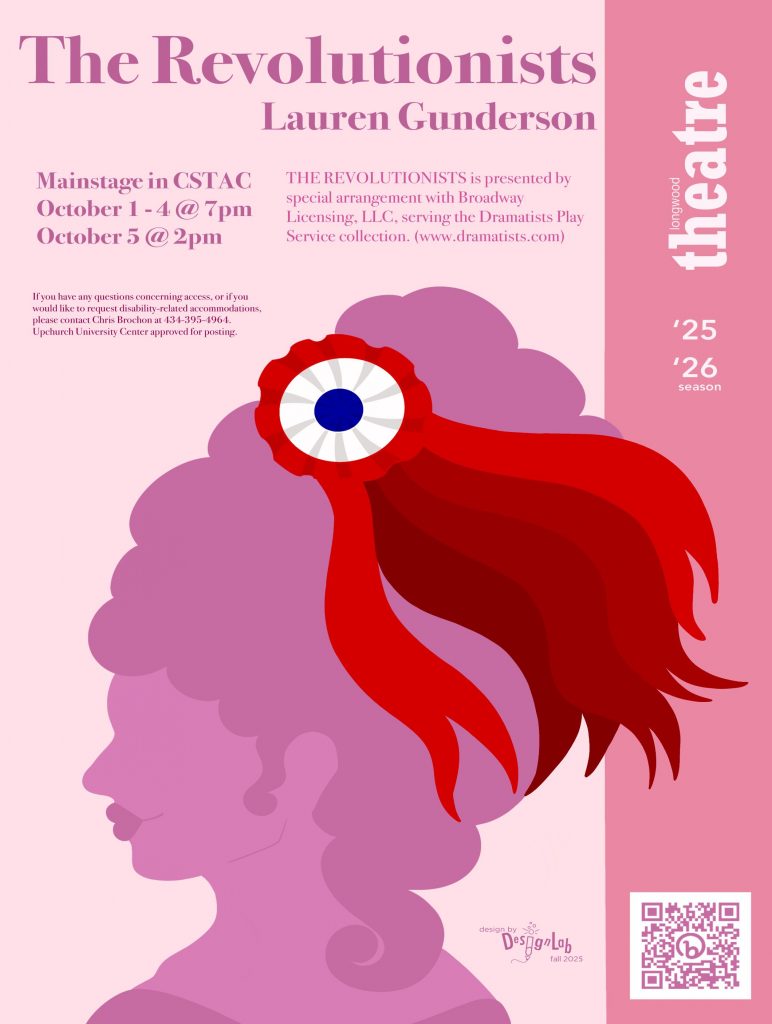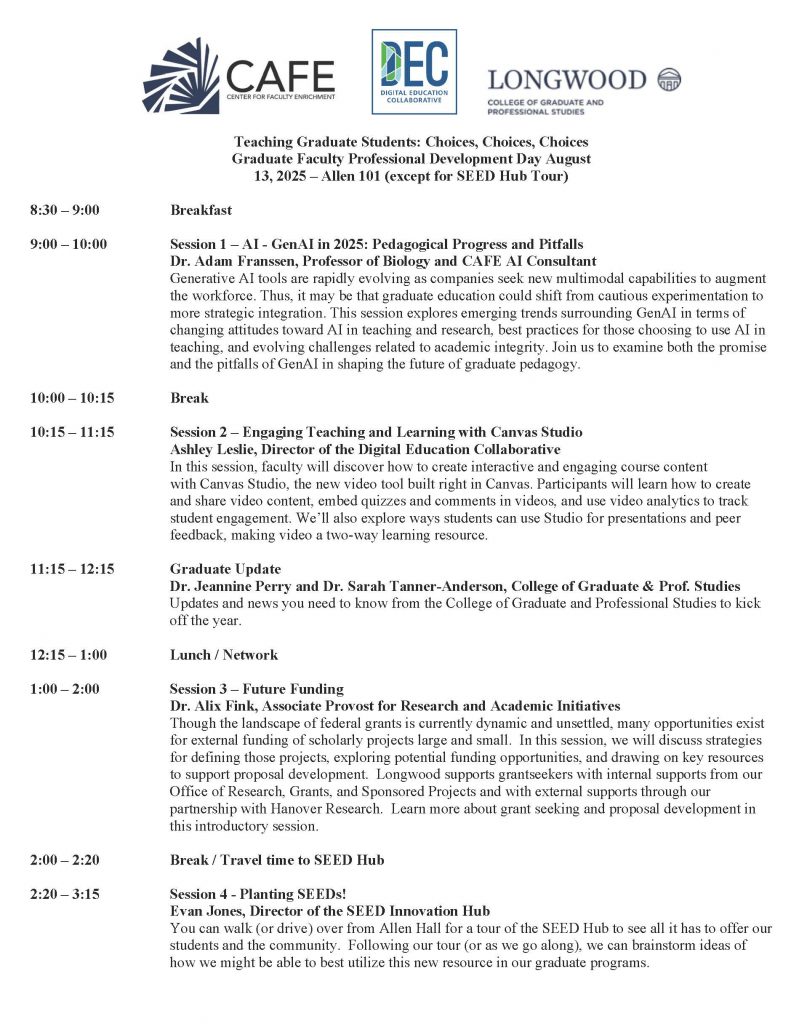At Longwood, move-in is a staggered, multistage process for the various groups of students who will be living in Longwood-managed housing for the 2025-26 academic year. Staggering the dates and times for the groups of students moving in helps to alleviate some of the congestion and long lines that are inevitable when hundreds of students and their families converge on a relatively small area such as the Longwood campus.
Move-in for the general student population begins on Wednesday, Aug. 20. The first day of classes is Monday, Aug. 25.
I hope you find the information below helpful as you plan to move your student into Longwood-managed housing.
We can’t wait to welcome them to campus, and we wish them all the best for the 2025-26 year!
When and Where
Move-in dates and times vary based on residence hall or apartment complex, residence hall room number and student type. If your student plans to live in Longwood-managed housing this year, they should have already received an email with their specific move-in date and time. If your student has not received an email or doesn’t know their specific move-in date and time, please contact the Office of Residential and Commuter Life at housing@longwood.edu.
You may also be able to find your student’s specific move-in date and time here under Check-in Schedule: https://www.longwood.edu/housing/move-in-information/
You’ve Got Questions—We’ve Got Answers
A wealth of information about move-in is available online here: https://www.longwood.edu/housing/move-in-information/
You’ll find answers on these topics:
—Things to Think About Before Move-in
—Need-to-Know at Check In
—Check-in Schedule
—Early and Late Arrivals
—Permitted and Prohibited Items
—Where to Unload
—Where to Park After Unloading
—Tips and Reminders for a Smooth Arrival
If you can’t find the answer you need on this website, contact the Office of Residential and Commuter Life at housing@longwood.edu.
Where to Unload and Where to Park After Unloading
—Routes to each residence hall, unloading areas and designated parking lots are shown on the printable move-in maps below.
—Drivers should activate vehicle flashers when unloading.
—Vehicles may not be left unattended.
—After unloading, residential students should park in their designated parking permit zone.
—Families and guests are welcome to park in the designated lots on the maps below.
Printable Move-in Maps
August 20, 2025 – Move In Map (pdf)
August 21, 2025 – Move In Map (pdf)
August 22-24, 2025 – Move In Map (pdf)
Volunteers Stand Ready to “Welcome Home Lancers”
A group of faculty, staff and student volunteers is ready to help make the move-in process as smooth as possible for first-time Lancers who will be living in Moss, Johns, Sharp, Register and Wheeler halls. Through the Welcome Home Program, volunteers will be available at these halls on Aug. 20 and 21 from about 8:30 a.m. to 3 p.m. They can help with unloading vehicles, staying with belongings while families take care of checking in and parking their cars, or assisting with the check-in process. Whatever your need, don’t hesitate to ask. A volunteer or staff member will try to help you themselves or to direct you to someone who can.
Think About Bringing a Rolling Cart or Dolly—and Water
Having a dolly or a rolling cart can make the move-in process much easier. These items will not be available on campus, so consider bringing one with you. Our experts highly recommend! Also, don’t forget the water. You can expect to experience some physical exertion—both inside and outside in the heat—so it’s important to stay hydrated.
How Many People Does It Take to Check In? Just one!
Just one person—your student—can take care of everything needed for check in, including picking up their keys. The lobbies of the residence halls can get very congested if several people are standing in the check-in line with a student. Please consider letting your student handle this—or having just one person join them in line in case they need help.
Managing Expectations
We have tried very hard to streamline the move-in process, but you should still expect to experience some waiting in line as you move into loading zones, check in, and use the elevators (where applicable) and stairwells.
One Last Thing: Outstanding Bills
If your student has outstanding financial obligations with Longwood University, please resolve these issues prior to move-in. In accordance with Longwood University policy, any student with an outstanding bill will not be permitted to move into Longwood-managed housing or to use their meal plan.
Questions regarding outstanding bills can be directed to Cashiering and Student Accounts at 434-395-2067 or Financial Aid at 434-395-2077.
—Sabrina Brown
